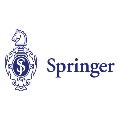In this paper, a novel framework is proposed to enable a predictive deployment of unmanned aerial vehicles (UAVs) as temporary base stations (BSs) to complement ground cellular systems in face of downlink traffic overload. First, a novel learning approach, based on the weighted expectation maximization (WEM) algorithm, is proposed to estimate the user distribution and the downlink traffic demand. Next, to guarantee a truthful information exchange between the BS and UAVs, using the framework of contract theory, an offload contract is developed, and the sufficient and necessary conditions for having a feasible contract are analytically derived. Subsequently, an optimization problem is formulated to deploy an optimal UAV onto the hotspot area in a way that the utility of the overloaded BS is maximized. Simulation results show that the proposed WEM approach yields a prediction error of around 10%. Compared with the expectation maximization and k-mean approaches, the WEM method shows a significant advantage on the prediction accuracy, as the traffic load in the cellular system becomes spatially uneven. Furthermore, compared with two event-driven deployment schemes based on the closest-distance and maximal-energy metrics, the proposed predictive approach enables UAV operators to provide efficient communication service for hotspot users in terms of the downlink capacity, energy consumption and service delay. Simulation results also show that the proposed method significantly improves the revenues of both the BS and UAV networks, compared with two baseline schemes.
翻译:在本文中,提出了一个新的框架,以便能够预测部署无人驾驶飞行器(无人驾驶飞行器)作为临时基地站,以补充地面蜂窝系统,面对下行交通超负荷,从而补充地面蜂窝系统。首先,根据加权期望最大化算法,提出了一个新的学习方法,以估计用户分布和下行交通需求;其次,保证使用合同理论框架,制定卸载合同,并分析得出可行合同的充足和必要条件。随后,形成了一个优化问题,在热点地区部署最佳无人驾驶飞行器,以便最大限度地发挥超载BS的效用。模拟结果显示,拟议的WEM方法产生大约10%的预测错误。与预期最大化和下行方式相比,WEM方法显示在预测准确性方面有很大的优势,因为蜂窝系统中的交通负荷在空间上变得不平衡。此外,与基于距离最近和最高能源指标最接近的两种事件驱动部署计划相比,在热点地区地区地区部署最优化的UAVA系统使用量,拟议的WM方法也使高效的网络用户能够预测高效的通信成本,同时,同时预测S-AVS的运营商能够大大改进S标准的能源收益。




